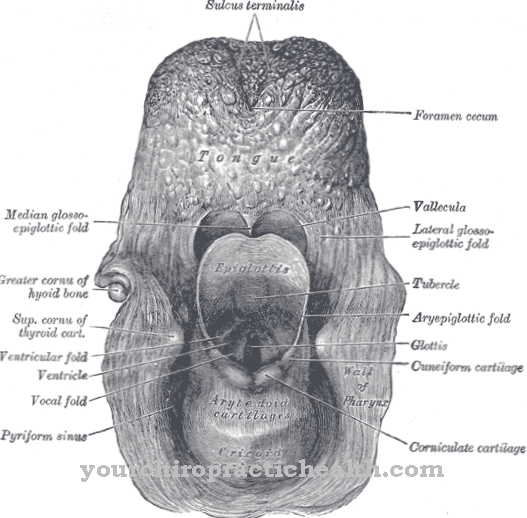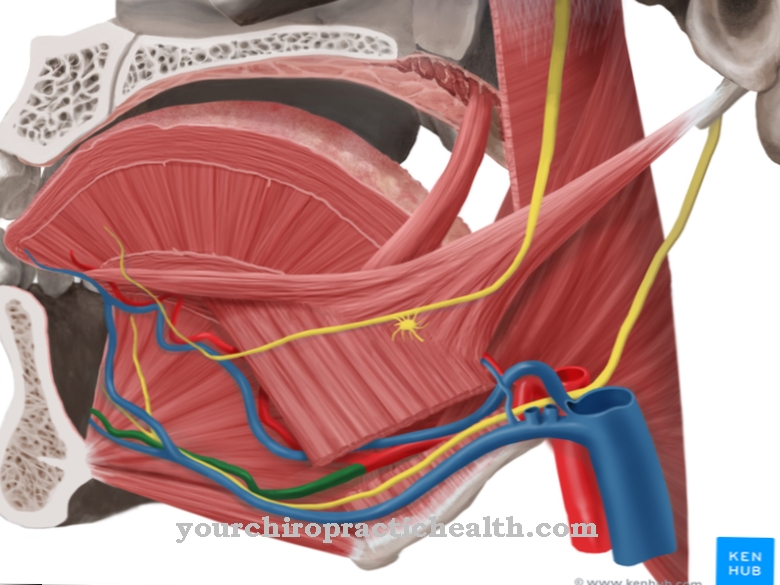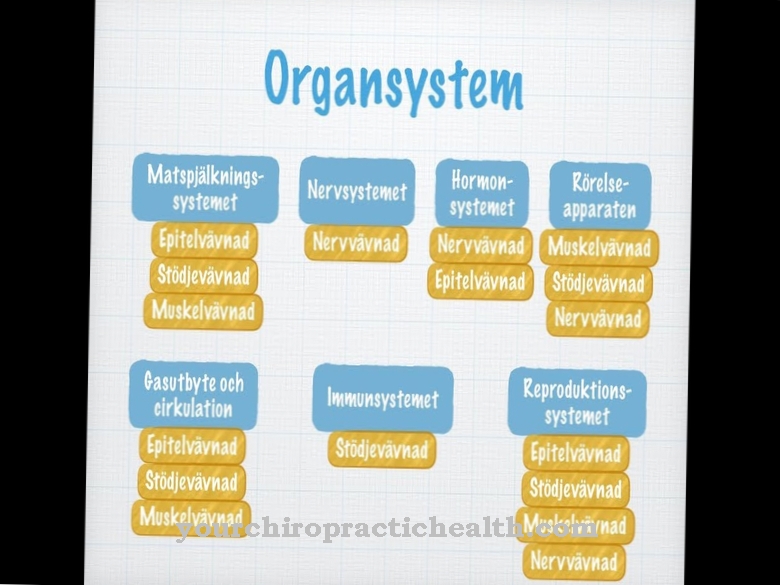GABA receptors sit in the nervous system and bind to the neurotransmitter γ-aminobutyric acid. By binding, they show an inhibitory effect on nerve cells. The targeted administration of certain drugs can influence the receptors and thus also the nerve cells, which is relevant for the treatment of epilepsy, for example.
What is a GABA receptor?
The receptors are sensory cells to which certain stimuli can bind. In the structures of perception, for example, receptors are the first instance of every perception. However, these structures also play an important role in many other body processes.
For example, the human nervous system is equipped with GABA receptors. The so-called neurotransmitters bind to these receptors. These substances are neurogenic substances and thus correspond to messenger substances. The binding of the messenger substances to a GABA receptor has an inhibitory effect on the associated nerve cell. A distinction is made between ionotropic and metabotropic GABA receptors. In addition to the GABAA, the GABAC receptor is one of the ionotropic binding sites.
A metabotropic receptor is the GABAB receptor. The exact mode of action of GABA receptors depends on the respective subgroup. The ionotropic variants are ligand-controlled and therefore affect the ion and electrolyte balance. The influx of ions within a signal cascade occurs, for example, through the activation of ionotropic GABA receptors. The metabotropic receptors act on metabolic processes and activate the formation of secondary messenger substances within the signal cascade after the stimulus binding.
Anatomy & structure
All GABA receptors in the human nervous system are located on one nerve cell each. Each of the receptors is a so-called transmembrane protein. Transmembrane proteins correspond to integral membrane proteins with one or more transmembrane domains.
The lipid bilayer for spanning integral membrane proteins is called the transmembrane domain. Receptors are equipped with structures to which certain substances can bind. Due to the fixed structure of their binding sites, all GABA receptors react exclusively to specific influences and are therefore only able to bind to certain messenger substances or neurotransmitters. The receptors specifically bind primarily the neurotransmitter γ-aminobutyric acid. In contrast to the other subgroups of GABA, the GABAB receptor is a G protein-coupled receptor that can be both pre- and postsynaptic.
GABAA receptors correspond to ligand-activated ion channels that are permeable to hydrogen and chloride carbonate ions. They are heteropentamers and thus each consist of five subunits that each span the cell membrane four times. Homologous subunits are the six representatives α1 to α6, the three representatives β1 to β3, the three representatives γ1 to γ3 and δ, ε, π or θ each with one representative. ρ has three representatives from ρ1 to ρ3. In the brain, the receptors are usually made up of two α, two β and one γ subunits. In addition to the γ-aminobutyric acid binding site, GABAA receptors have allosteric binding sites that respond to benzodiazepines and are located on the γ subunit. Binding sites for neurosteroids and barbiturates are located on the β subunit.
Function & tasks
GABA receptors are either ligand-gated or metabotropic. The ligand-gated receptors include the GABAA and GABAC receptors. Only the GABAB receptor is metabotrope. The ligand-gated GABAA receptor is a chloride ion channel. When it binds to GABA, Cl- flows in. This influx shows an inhibitory effect on the nerve cell. These sub-variants are widespread in the brain and are responsible for the balance between excitation and damping in the nerve cells.
Central nervous depressants such as benzodiazepines, propofol or anti-epileptic drugs bind to these receptors. The ligand-gated GABAA-ρ receptor cannot be inhibited by bicuculline. Thus, active ingredients such as anti-epileptic drugs hardly have any effect on these areas. The metabotropic GABAB receptor is found either presynaptic or postsynaptic. When GABA binds to presynaptic receptors, more K + - flows in. The influx of Ca2 + decreases. This leads to hyperpolarization: the release of the transmitter is inhibited.
When binding to the postsynaptic variant, an increased K + influx is activated. In this way the inhibitory postsynaptic potential is created. This type of GABA receptor is susceptible to substances such as the muscle relaxant baclofen. In summary, GABAA receptors are distributed in the brain and spinal cord, where they are sometimes the most important receptors for inhibiting the central nervous system. In the basal ganglia and the cerebellum, these receptors are involved in motor control.
In the thalamus, the receptors help induce and maintain sleep. In the spinal cord, GABA receptors are located on the motor neurons, where they are involved in reflex circuitry and the coordination of movements.
Diseases
The GABA receptors are clinically and pharmacologically relevant, especially in connection with the substances that can bind to them. This applies to alcohol, for example.
Alcoholics bind to the GABAA receptors and increase the permeability for chloride ions on the nerve cell membrane. This leads to hyperpolarization and the action potential frequency decreases. Because the excitatory system is inhibited at the same time because of the binding of alcohol to NMDA receptors, alcohol has a sedative effect on humans. This relationship can be relevant in alcohol poisoning and is also an important relationship in clinical practice with chronic alcohol addicts.
Apart from that, the state of the central nervous system can be influenced by pharmacological substances that are capable of binding to the GABA receptors. This plays an important role in clinical practice in the treatment of various neurological diseases. The treatment of epilepsy, for example, is based on this connection, but in general the targeted manipulation of the nervous system through the administration of medication is a main component of the therapy. Tranquilizers like benzodiazepines have a sedative effect. The same goes for barbiturates, which are often used to induce anesthesia.
Antiepileptic drugs such as valproate prevent epileptic seizures by blocking the receptors. Tiagabine inhibits the uptake of GABA and increases its concentration in the synaptic gap so that epileptic seizures are reduced. Many drugs also have a stimulating effect on GABAA receptors and can thus trigger addictions. The addiction is mediated via α1-containing receptors. Their stimulation causes functional changes in certain AMPA receptors of the respective neuron in neuroplastic processes.
Typical & common diseases of the central nervous system
- epilepsy
- Alzheimer's, dementia, Parkinson's
- depressions



.jpg)























